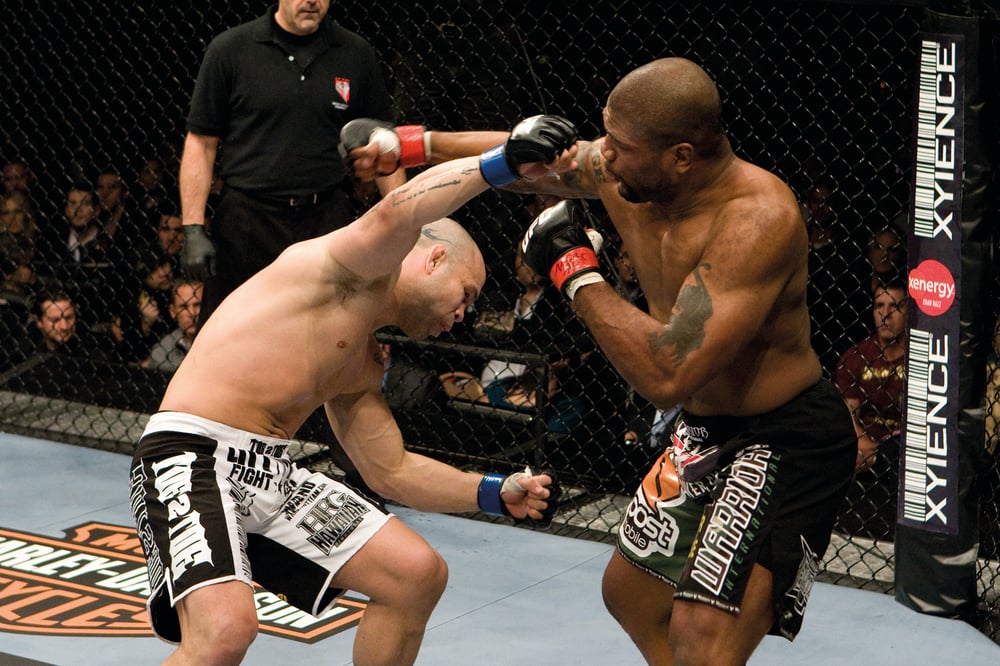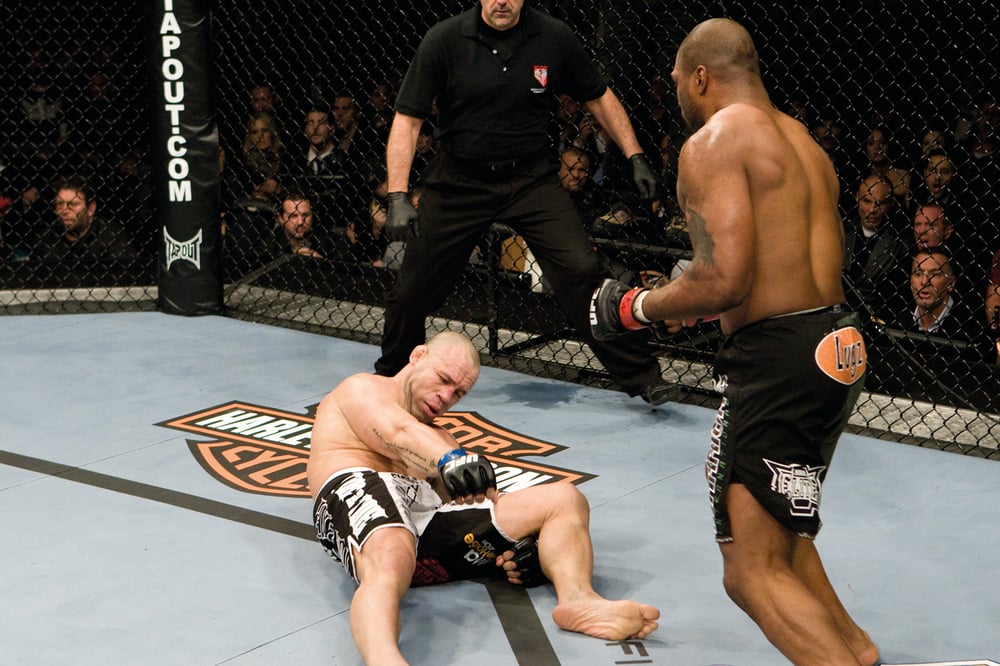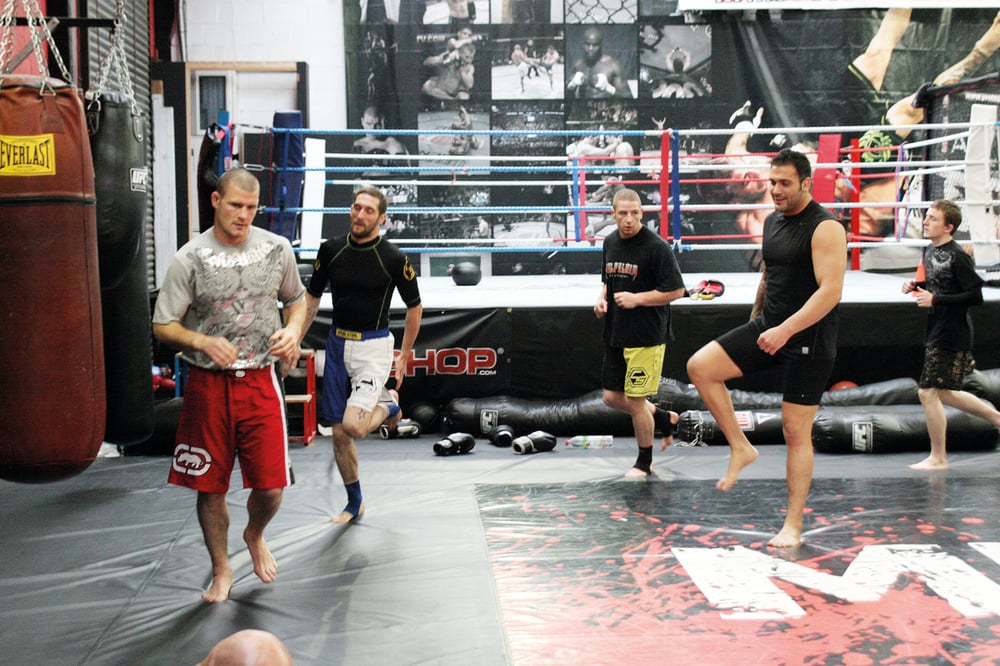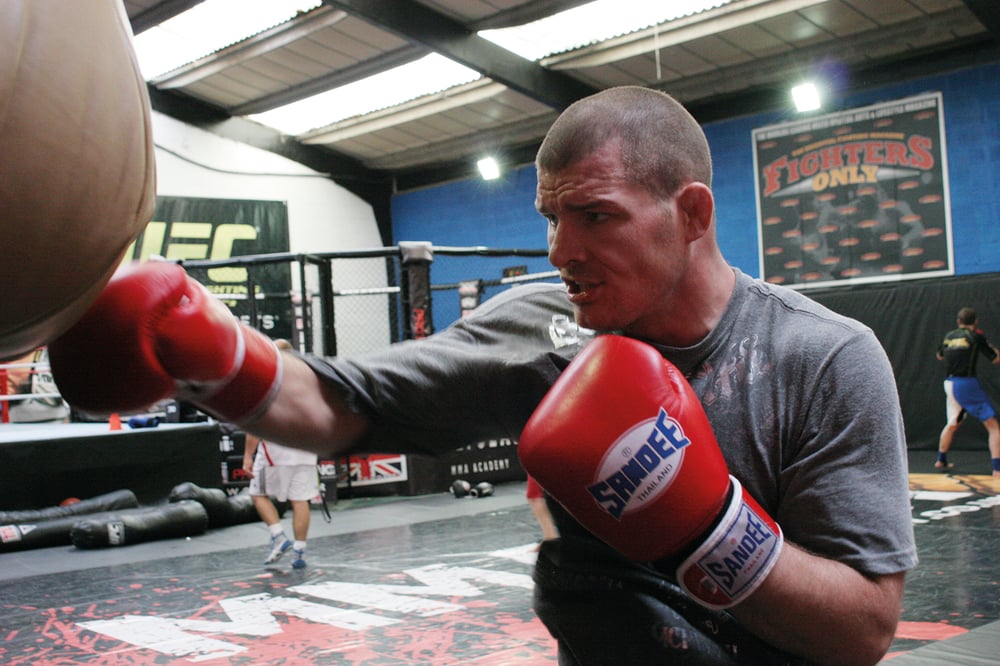
Issue 053
August 2009
The Wolfslair MMA Academy is the UK’s best-known and most successful MMA gym. Home to top British, European and American fighters, the Wolfslair has grown from humble beginnings into a true powerhouse.
Founded in 2004, the original gym (situated just outside of Liverpool, England) was not much more than the product of two men’s love for the sport of MMA. Two local businessmen, Anthony McGann and Lee Gwynn, were fans of, and trained in, MMA. Fed up with having to find venues with suitable space and mats with which to grapple, they decided to create their own dedicated facility in which to train.
“We don’t do things by halves,” says McGann. He’s not kidding. The pair built the gym (housed in an 8,000 square-foot unit that was once a sausage factory) from scratch by themselves, installing the mats, painting the walls and constructing the base to the original 26-foot cage in McGann’s garage. “Our original intentions weren’t to build a fight team, but we started looking at it from a business point of view,” he says. From a humble dream came one of the most recognizable names in MMA: The Wolfslair.
In January of 2009 the gym was used for the UK elimination fights for TUF 9. As a lighting rig and full-size UFC Octagon needed to be temporarily installed for the filming, that meant everything in there (including the cage, 24-foot boxing ring and custom mat) were ripped out. Refurbished with state-of-the-art matting, a brand new cage and all the latest equipment, the Wolfslair is back up and running and the site of some of the hardest training in the UK.
When people first hear of the infamous and grueling training sessions, they can hardly believe their ears. The professionals at the Wolfslair train for three hours every morning, then again in the evenings. This taxing regime isn’t for everyone and only the toughest stick it out, but the resulting few who can handle the tough training and hard sparring are in a perfect position to take their careers to the next step.
For an example of how successful the Wolfslair gym has been, take a look at fighters such as Quinton Jackson, Michael Bisping and Cheick Kongo for a start. These three world-class fighters all call the Wolfslair home. Bisping has been there since 2005, while Kongo and Jackson joined the team in 2008. That A-list fighters like Jackson and Kongo would decide to go there speaks volumes about the level of training on offer. None of this is by accident.
Mario ‘Sukata’ Neto is the head MMA coach at the Wolfslair. A black belt in jiu-jitsu under the legendary Carlson Gracie, Mario moved from Brazil to England to help establish the fight team and has been integral to their technical development. Tony Quigley is the resident boxing coach (Quigley is a local man who’s own son is a top professional boxer) while Muay Thai specialist Dave Jackson handles the kickboxing element, but the gym has always had a policy of bringing in the best coaches they can find, no matter where they find them.
The latest additions to the coaching roster are former UFC heavyweight champion Ricco Rodriguez (who teaches grappling and MMA) and Mark Kinney, a boxing coach who works with the English national amateur boxing team.
Ricco needs little introduction; his exploits as one of the sport’s foremost heavyweights are well known. He’s fought everyone from Randy Couture to Minotauro, and as a BJJ black belt feels he has plenty to offer the members of the fight team. “They’re a great group of guys, I get on with all of them. Everyone’s happy with what I’m showing them,” he says. “They’re like sponges, they’re so hungry to learn. I know what it takes to win at the top level, and they’ve all got it. Guys like Bisping, Kongo, Rampage, they’re all hungry guys. They’re a bunch of studs, and there are no egos. It feels good to help these guys.”
Mark Kinney will be a name no MMA fan will be familiar with, but his work as an amateur boxing coach is about as good as you can get. Recently, Kinney was one of the coaches who took the English amateur boxing team to compete in India. They came home with a record haul of three gold medals, a silver and a bronze.
When he coaches the boxing sessions, he does so with a steady stream of orders, barked out over the blaring music and tattoo of blows on the punch bags. “Control the feet, control the fight!” he shouts. “Look to the body! Draw him in!” he yells. “Power shots! You’re toe tapping!” His coaching is relentless, as is the work rate he demands from the fighters.
His level of boxing instruction has got everyone at the gym really excited, and his technical style complements that of resident coach Tony Quigley perfectly. “Mark is a very technical boxing coach,” says Paul Kelly. “Everyone has come on loads. Mike [Bisping] has, he’s hitting a lot harder.”
“There are some clever lads in here,” says Mark, obviously impressed by the fighters around him. “These lads have got some great qualities. They’re willing to learn, and you’ll see some big improvements because of that. These lads, they’re so respectful. They bow to you and shake your hand. Maybe it’s a martial arts thing.”
Kinney had barely any knowledge of MMA before coming to the Wolfslair, so made a point of getting up to speed before working with the fighters. “The first thing I did when I came in here was sit down with the other coaches. These guys [the fighters] are teaching me too. The guys will say ‘I can’t do this roll, they’ll grab my head’, so I say ‘okay’ and work around it.” He often picks the fighters’ brains over different aspects of MMA, such as the stances required for kickboxing compared to grappling and the dark arts of the clinch.

Kinney started coaching the Wolfslair fighters toward the end of 2008. For evidence of his work, check out Rampage’s win over Wanderlei Silva. “That left hook Rampage landed on Wanderlei was a classic amateur boxing left hook,” says Mark with a grin. He also laughs when he tells of meeting Rampage, arguably one of the biggest names in MMA, for the first time. “I didn’t know who Rampage was! I’d never heard of him!”
Fighters come and go at the Wolfslair. Rampage is busy filming TUF 10, while many of the others who come here for their camps are away fighting all over the world. A hard core of about a dozen can be found on the mats daily, mostly local up-and-comers, keen to taste some of the success the bigger names enjoy.
Aaron Wilkinson, an aspiring 3-2-0 lightweight, makes a 90-minute round trip train journey every day to train at the Wolfslair. “You never have an easy day,” he tells us, but that doesn’t stop him from traveling from the neighboring city, Manchester. There are plenty of gyms closer to home, so why not train at one of those?
Because there is a bond among the Wolfslair fighters that runs deep. “They really are like a family,” says Ricco, and he’s not kidding. Cheick Kongo only half-jokingly calls Paul Kelly his little brother, although he tortures him in the same manner an older brother will torment their smaller sibling.

Many of the younger fighters even live at the gym for much of the week. There is functional (if Spartan) dorm-style accommodation set aside for those who travel further than even Wilkinson to come and train. Some fighters, such as 3-0-0 featherweight Karsten Lenjoint, travel from across the country to stay there for four or five days of the week, returning home to see their families only on weekends. It’s a tough life, but if you want to make it as a pro fighter, sacrifices must be made.
McGann is keen to point out that the name of the gym is the Wolfslair Academy, and while the pro training sessions are by application only, there are evening classes where members of the public come in to train. By labeling themselves an academy, the guys at the Wolfslair are committing themselves to building a future, and it hasn’t gone unnoticed.
“Some places, people come and go. You see the rise and fall of some academies, but this place is going to stay,” says Ricco. “I’ve trained all around the world, and I come here because I like it. Everyone here is cool as fuck.”
Not bad for an old sausage factory.













